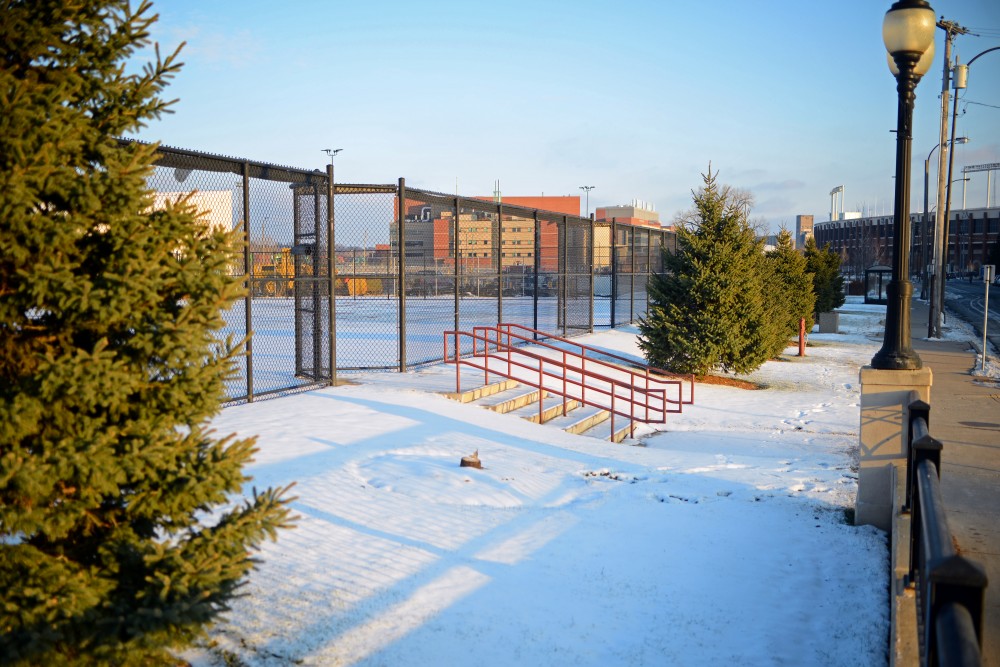A spruce tree near the University of Minnesota tennis courts was cut down and stolen on Nov. 30, the first tree theft of the academic year.
Winter tree thefts near the holidays are a problem the University has dealt with for several years. To combat the problem, University Facilities Management treats susceptible trees with skunk essence, causing them to emit an unpleasant odor when brought inside.
Tom Ritzer, assistant director of University Landcare, said landcare workers target trees they think are most likely to be stolen, often pine or spruce trees.
“The tree that was cut down was a Black Hill Spruce, which is very conical, kind of a classic Christmas tree form. And it was growing in an open area so it had a very symmetrical form, so I’m sure it looks really great in someone’s living room,” Ritzer said.
The skunk essence itself is inexpensive, he said, costing $30 to $40 per ounce.
“We dilute it with water and put it on the trees, so there’s labor cost involved,” Ritzer said. “It ends up being maybe $10 per tree.”
The cost of replacing a tree, especially one that’s grown for several years, can cost thousands of dollars. Landcare supervisor Doug Lauer estimated the 12-foot spruce stolen this year will cost roughly $2,500 to replace. The cost of the tree when it was first planted at a shorter height was approximately $300.
“Somebody decided they needed a Christmas tree and they couldn’t buy it from the lot,” Lauer said. “So for us to get a 12-foot tree to match the other trees in that line is going to cost thousands of dollars.”
Lauer has overseen the application of the essence in past years. He said the number of trees stolen varies year-to-year depending on awareness, but added that about two to three trees are stolen annually.
Ritzer said tree thieves won’t know what they’ve gotten themselves into until they bring it inside.
“You never know if you’re going to get a tree that’s sprayed,” he said. “That’s the whole idea.”
The University has used the tactic sporadically for around 15 years, Ritzer said, and the problem of tree thefts dates back even further.
University spokesperson Lacey Nygard said University of Minnesota Police Department officers are aware of the issue and monitor for tree thefts when patrolling campus.
Nygard said UMPD has not made any arrests regarding tree theft in recent years, but the department believes awareness and patrolling has helped mitigate the problem.
Despite the preventative measures, Lauer still isn’t confident the University will ever eradicate the problem.
“I would hope we would be able to, but it’s been happening on [such] a consistent basis that I have my doubts it would ever go away,” he said.








